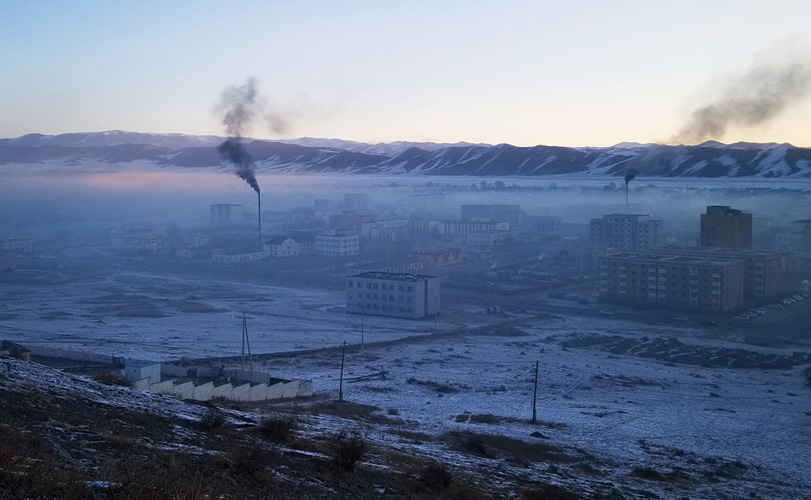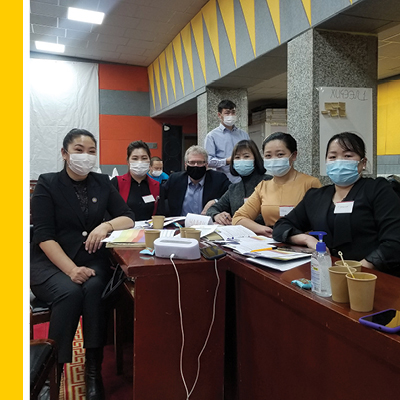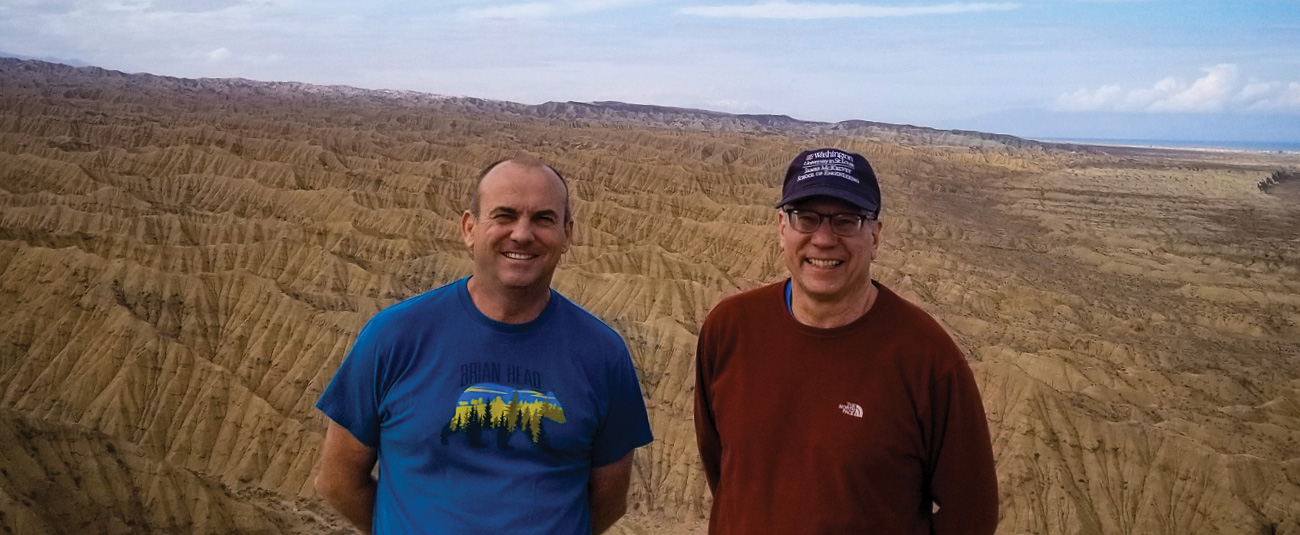Environmental champion
Jay Turner renews focus on environmental exposures ‘in St. Louis, for St. Louis’
Environmental hazards such as living near roadways, air-polluting industries and dumping sites disproportionately affect nearby communities, where residents may show excessive levels of illnesses such as asthma, cancer and cardiovascular disease. After many years of air quality research in Asia, Jay Turner, an internationally respected environmental researcher at Washington University in St. Louis, is making such environmental justice issues in local communities a renewed focus in his lab.
“It’s really exciting to be looking at air pollution exposures and health effects where so much has been done, but there’s still so much more to learn,” said Turner, the James McKelvey Professor of Engineering Education and vice dean for education in the McKelvey School of Engineering. “Now we might be looking at neurological effects instead of solely respiratory and cardiovascular effects. I’ve intentionally swung in the environmental exposures direction, both because I feel my skill sets can contribute to working with the health scientists, and I find that it’s a fruitful landscape for my students.”

Morning haze over Bayankhongor, Mongolia, photo taken February 2022. Bayankhongor’s population of about 30,000 is about 2% of Ulaanbaatar’s (UB) population, yet in the winter, the particulate matter air pollution is about two-thirds of UB's levels.
The St. Louis project
Part of his latest motivation came from WashU connections. In 2019, the Washington University School of Law’s Interdisciplinary Environmental Clinic found that most of the top pollutant sources in St. Louis are concentrated in neighborhoods of color and that Black residents of St. Louis are at a greater environmental risk than white residents. That same year, in his inaugural address, Chancellor Andrew D. Martin spoke movingly about the university’s commitment to its home city.

“WashU being ’in St. Louis and for St. Louis’ resonated with me,” said Turner, who in recent years has largely focused overseas. “It felt like the right time to reengage locally. And certainly, the right way to do it now is through an environmental justice lens. Also, this is transformational work for my students. Yes, they should get their research into peer-reviewed publications, but at the same time, they should be working with people in the community.”
That balance is what drew doctoral student Tyler Cargill to Turner’s lab. Cargill wanted to work with Turner because Cargill knew he would receive both community-oriented field experiences and strong training in the technology and instrumentation necessary to the research.

In late 2021, Turner, Cargill, and doctoral student Zhiyao Li placed mid-cost QuantAQ Modulair sensors at 14 member churches around St. Louis in partnership with Metropolitan Congregations United and with funding from the Missouri Foundation for Health. Five of the churches also have additional sensors loaned by the EPA and measure levels of gaseous pollutants including ozone and carbon monoxide.
“You can see the particulate matter if it’s in a high enough concentration, or if the atmospheric conditions are right, like when there are forest fires in the west,” Cargill said. “We inhale the particles. If they’re small enough, they can spread to anywhere in your body, and that can lead to an increased risk of inflammation and cause cardiovascular effects. They’re thinking it’s likely to cause neurological effects, and potentially cancer as well. That’s why we do air quality research.”
Cargill has been meeting with the church community to listen to their concerns.
“A lot of my preparation for this comes in conversations with Dr. Turner,” Cargill said. “You don’t want to go too in-depth, as you might lose the audience, but you also don’t want to skim the surface. You could miss the chance to teach people something about air quality so they can advocate for change. You also want to hear what they think is important.”
“We inhale the particles. If they’re small enough, they can spread to anywhere in your body, and that can lead to an increased risk of inflammation and cause cardiovascular effects. They’re thinking it’s likely to cause neurological effects, and potentially cancer as well. That’s why we do air quality research.”
— Tyler Cargill

Nap time at a kindergarten in Bayankhongor, Mongolia, February 2022.
Building on international research
Turner’s local research into how environmental pollutants may affect human health comes on the heels of several projects in Asia, where he has been an air quality fellow supporting U.S. Embassy Tashkent in Uzbekistan since 2020. He visited the country in May 2022 to meet with scientists, government officials, students and civil society leaders across the country to discuss its environmental concerns.
U.S. embassies help connect experts such as Turner with their international counterparts, which in turn strengthens technical cooperation and the relationship between countries.
“Dr. Turner in particular has proven irreplaceable to Embassy Tashkent,” said William P. Langley, Environmental, Science, Technology, and Health Officer at the embassy. “He answers our questions, provides technical guidance and advises our partners in the government of Uzbekistan. In short, he contributes not just to our understanding of the country’s air quality environment, but to the United States’ bilateral relationship with Uzbekistan.”
“The work raised awareness and provided capacity building and interest to start looking at this problem more carefully across the whole country.”
— Jay Turner
Turner also has worked in Mongolia for nearly a decade. His latest project, in partnership with United Nations Children’s Fund (UNICEF), measured children’s exposure to air pollution in 30 kindergartens and a few health care facilities inside and outside of Ulaanbaatar, the country’s capital. Poor indoor air quality arises in part from a combination of severely overcrowded classrooms and infiltration of smoke from the coal stoves many Mongolians use to heat their yurts, called gers, and small homes, he noted.

“There’s a very strong coupling between socioeconomic status and air pollution exposures,” Turner said. “The people living in gers tend to be the ones with lower socioeconomic status. And indeed, we’re finding it’s the kindergartens in and near the gers communities that have the worst indoor air quality.”
His team’s research has smoothed the way for UNICEF to have helpful conversations with the Mongolian government about ways to improve the indoor environment in kindergartens. Building upon this work, UNICEF recently expanded the indoor air quality network to include about 100 kindergartens and funded the Mongolian government to place low-cost air quality sensors outdoors nationwide.
“That kind of scale-up is what we love to see happen,” Turner said. “The work raised awareness and provided capacity building and interest to start looking at this problem more carefully across the whole country. The key is that in the country, the people will do that themselves.”
To further empower the people of Central Asia, he proposed the creation of an air quality knowledge hub between universities in Uzbekistan, Kyrgyzstan and Tajikistan that will expose students to careers in air quality. With funding from the U.S. Department of State, Turner and his colleagues at the three universities are offering a short course on different aspects of air pollution, health and sustainable development, to raise awareness about possible professional opportunities.
Returning to his roots
As he adds the local community back into his research focus, Turner is aware that he’s continuing a long WashU tradition of serving St. Louis. Raymond Tucker, who was a professor and chair of mechanical engineering at WashU for 30 years, also was the smoke commissioner for the City of St. Louis in the 1930s and established a national reputation as a leader in the anti-pollution field. Tucker also served three terms as mayor.
“Raymond Tucker is a role model of how an academic can also engage in very practical aspects of environmental management,” Turner said. “Here’s a person who, while he was a professor at WashU, engaged in the issues in his town, and was a big part of solving the problem. I see that as an inspiration — really helping people.”
Back to Engineering Momentum
